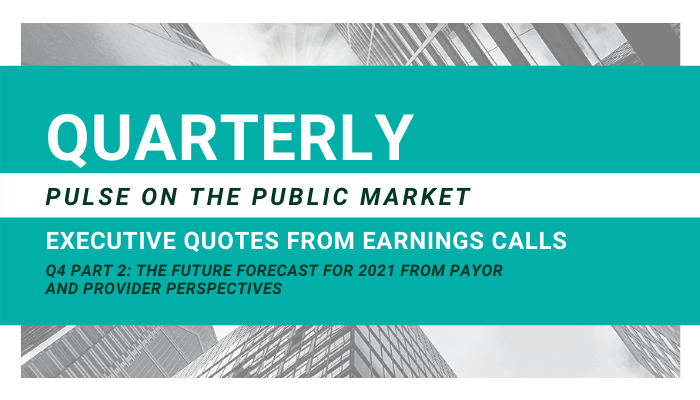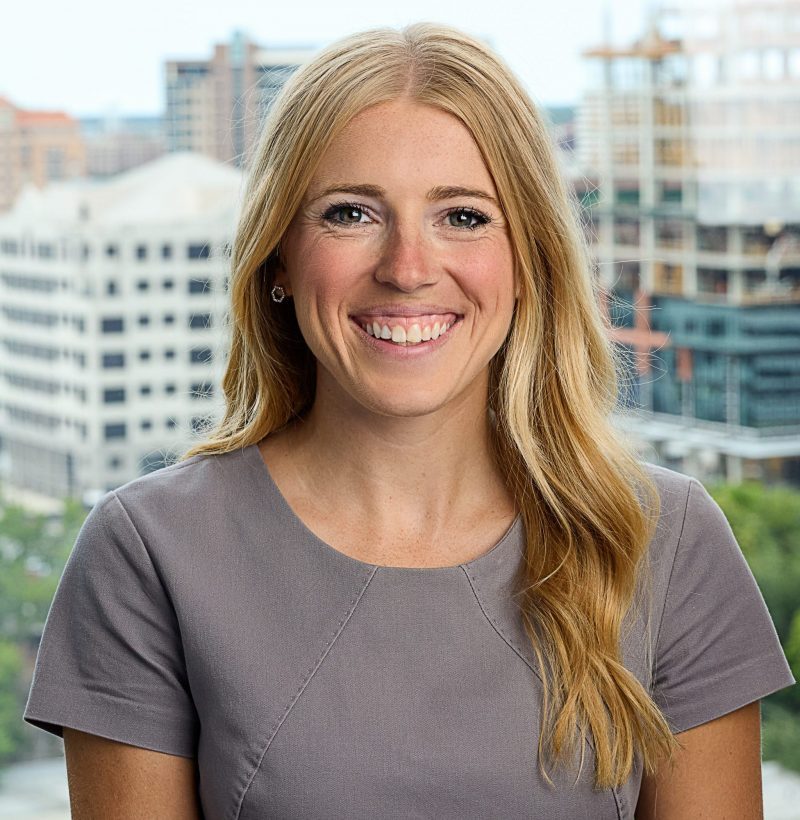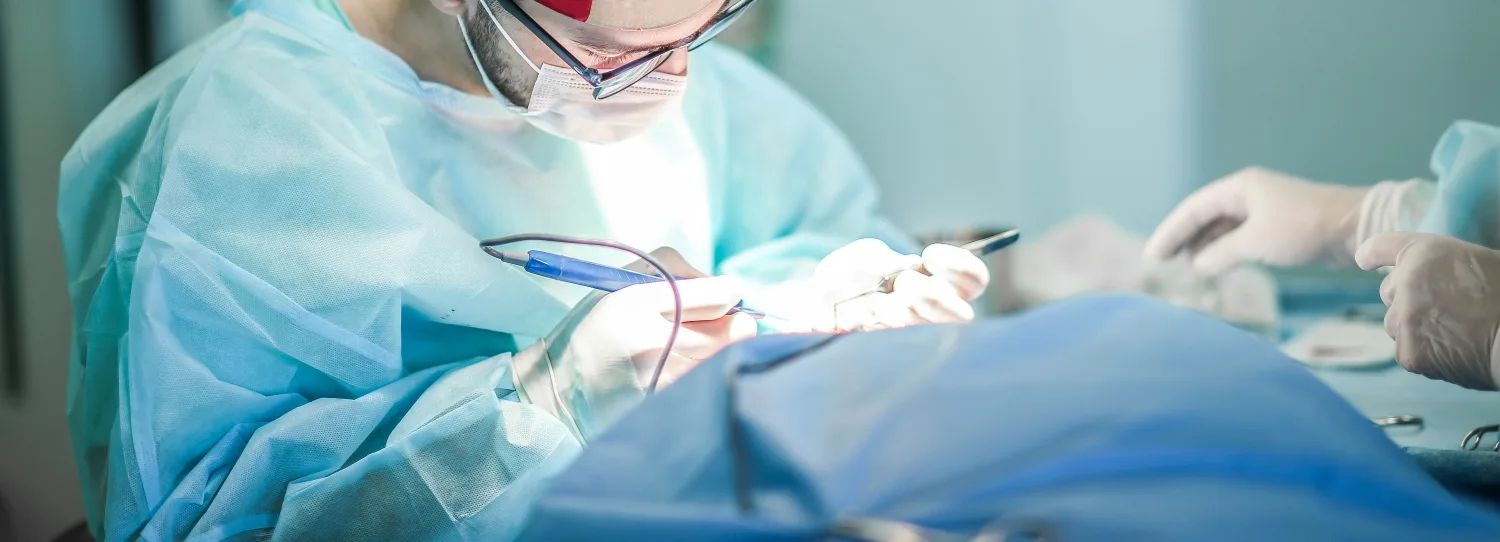
Contributors: Savanna Dinkel, Blake Madden and Chris Madden
Providers: Continued Shift to the Outpatient Setting
With the roll-out of the vaccine and the lifting of COVID-19 restrictions, providers are able to look further forward towards their operations in a post-pandemic world. During Q4 2020 earnings calls, the latest occurring on March 8, 2021 (RadNet), management teams began more comfortably addressing their go-forward expectations and future strategies. Providers across the board discussed how COVID has altered industry dynamics and accelerated certain pre-pandemic trends. Most notably, many providers, especially those in acute care, commented on the continued shift to outpatient facilities or other lower cost of care providers. A few companies noted that the COVID-19 pandemic has increased the need for behavioral health services. Finally, as cash flows return to normal, management teams addressed their increasing ability to pursue and appetite for acquisitions and de novo opportunities.
Acute Care
“We continue our emphasis on the development of service lines, thereby further increasing our acuity levels on the inpatient side. And our investments on the outpatient side are designed to expand entry points into our networks, providing more convenient out-of-hospital care environments and to satisfy the evolving consumer expectations about the availability and accessibility of health care services.
In 2020, we opened 3 new ambulatory surgery centers and 3 new freestanding emergency departments. More ASCs, freestanding EDs, urgent care centers, along with further expansion of our physician practice locations, are in the pipeline and under active development. With our stronger portfolio, we are on a path to successfully develop and grow both acute care services and our ambulatory networks moving forward.”
Tim L. Hingtgen, CEO & Director – Community Health Systems Q4 2020 Earnings Call Transcript
“We are investing in our outpatient facility development … we will continue to build on that because we believe that our patients deserve a convenient offering of facilities in our network. That doesn’t require, fortunately, as much capital as the inpatient components of our spending.”
Samuel N. Hazen, CEO & Director – HCA Healthcare, Inc. Q4 2020 Earnings Call Transcript
“We continue to be thoughtful about the capital investments and the service lines in the hospitals that we think have growth potential based upon the underlying demographics and opportunity to create better and more profitable service lines for the community in those markets. It has also, obviously, generated a set of opportunities for us at the intersection of our Ambulatory and Hospital business in terms of high-return capital deployment.”
Saumya Sutaria, President, COO & Director –Tenet Healthcare Corporation Q4 2020 Earnings Call Transcript
Post-Acute Care
“As we start 2021, we believe our return to volume growth in both segments involves return of orthopedic and lower extremity joint replacement cases, and mitigation of COVID-related isolations and quarantines. As discussed, many of our markets continue to have limited elective surgeries, particularly with elderly patients with complex medical conditions.”
Douglas Coltharp, Executive VP & CFO – Encompass Health Corporation Q4 2020 Earnings Call Transcript
“From 2010 to 2018, the supply of IRFs remained relatively stable, yet the 65-plus population grew 32%. There’s a supply and demand imbalance, and we’re one of the few companies with both the operational expertise and capital necessary to build and operate freestanding IRFs. We have eight new hospitals expected to open in 2021, and we expect to add 100 to 150 beds to existing hospitals. We’ll also continue development on the 10 new hospitals we expect to open in 2022.”
Mark Tarr, President, CEO & Director – Encompass Health Corporation Q4 2020 Earnings Call Transcript
Home Health and Hospice
“Home health was up [in spend] by 2% with hospital care, physician and clinical services and nursing home care all down low- to mid-single digits. What this demonstrates is that the pandemic has resulted in a shift in referral patterns, with more patients, families, physicians and discharge planners choosing home health over more costly and potentially higher-risk concrete care settings.”
Keith G. Myers, Co-Founder, CEO & Chairman – LHC Group Q4 2020 Earnings Call Transcript
“The most complex issue facing VITAS over the past 9 months has been the disruptive impact the pandemic has had on traditional hospice referral sources, which, in turn, has impacted our patient census patterns. Fortunately, the portions of the health care continuum have — certain portions have normalized, and hospital referral and admissions have significantly improved from low admission rates experienced early in the pandemic … Despite the admissions growth, our average daily census declined 2.8% in the fourth quarter. This decline in census is a direct result of disruption in senior housing, which includes nursing homes and assisted living facilities.”
Kevin J. McNamara, President & Director – Chemed Corporation Q4 2020 Earnings Call Transcript
“We’ve kind of had to switch the playbook a bit. And go back to what we did in hospice and identify targets we like and go pursue them. We’ve got a great pipeline … I think there will continue to be people we hear rumors every day, much more of assets being snapped up. There was some news this morning. There was some news last night. I think people are understanding the home is a place where you need to be. And I think there will be diversified companies that will try to get into this space, and we will see how they do. I think one of the great things about this industry is — both industries as they are so highly fragmented …. So, I think there will be a lot more activity. My guess is there will be a couple of IPOs out there. We hear rumors on it. Again, they’ll compare themselves to us. We will see how they do. And we welcome the competition.”
Paul Berthold Kusserow, President & CEO – Amedisys, Inc. Q4 2020 Earnings Call Transcript
“[Demographics are] strongly in our favor with the baby boomers creating a potential surge of patients in the coming year, with more people turning 65 years old than ever before. The burgeoning 75-plus population, coupled with ever-increasing unsustainable health care costs puts us in a very advantageous position as an at-home, aging-in-place company, delivering the highest quality care at the lowest cost to seniors. Keep in mind, over 9 out of 10 baby boomers want and expect to be able to age and die at home. According to CMS’ public projections and based on current law, both home health and hospice are in line for positive rate updates, well into the future. Given the low-cost and high-quality nature of our businesses, this makes a lot of sense.”
Paul Berthold Kusserow, President & CEO – Amedisys, Inc. Q4 2020 Earnings Call Transcript
“COVID-19 continues to adversely affect senior housing occupancy … The guidance we will provide later in this call reflects this continued weakness in senior housing occupancy for the first half of 2021. We anticipate improvement in senior housing admissions in the second half of 2021 as senior housing patient mix and aggregate occupancy returns to pre-pandemic levels.”
Kevin J McNamara, President & Director – Chemed Corporation Q4 2020 Earnings Call Transcript
Behavioral Health
“With our singular focus now on our U.S. operations and increased financial flexibility, we intend to make strategic investments in 4 distinct growth pathways: bed expansions; de novo facilities; partnering with health systems; and through strategic M&A. Together, these growth pathways will provide additional opportunities for Acadia to reach more patients in new and existing markets. We expect that our multiple pathways will provide a 10% EBITDA growth rate over the next 5 years … And I think that it looks from just the pipeline that there are opportunities not only for the tuck-ins, but perhaps going forward, some of the larger M&A that might come to market.”
Debra K. Osteen, CEO & Director – Acadia Healthcare Company, Inc. Q4 2020 Earnings Call Transcript
“…I think we have a strong belief that the biggest impact on our behavioral volumes in 2020 has been COVID and COVID-related dynamics. And when those dynamics ease in 2021, behavioral volumes should resume to pre-pandemic levels. And quite frankly, we believe potentially higher than pre-pandemic levels because we think that the underlying demand for behavioral care has been increasing.”
Steve G. Filton, Executive VP, CFO & Secretary – Universal Health Services, Inc. Q4 2020 Earnings Call Transcript
“We see opportunities again in behavioral health where we have delivered value in that category. It’s not really post-acute. But again, it’s connected to our system. A lot of our patients have behavioral health needs, many of which we can take care of, but there are opportunities for us to add programs and add capacity in some markets to deal with some of the mental health challenges that exist across the country.”
Samuel N. Hazen, CEO & Director – HCA Healthcare Inc. Q4 2020 Earnings Call Transcript
Clinical Laboratories, Diagnostic Imaging & Other
“We are seeing more opportunities for [hospital laboratories]. We’re spending a lot more time in discussions with various hospitals and local laboratories. And I can tell you, even as a senior management team, we’re spending a lot more time in those discussions ourselves. So, I feel good that there will be multiple opportunities as we go through this year … Hospitals have realized how capital intensive this business is. So many hospitals had to update their labs to be able to do COVID testing at any scale. And as they start to look at keeping those labs updated outside of COVID, they realize they probably need to do some additional upgrading to the equipment. So, they’d rather use that capital, for example, for a new surgery suite versus having to just update the lab to run the test that they’ve done in the past.”
Adam H. Schechter, President, CEO & Chairman – Laboratory Corporation of America Holdings Q4 2020 Earnings Call Transcript
“I expect this will be a busy year for us. And so we’re selective with what we’ll open, but I expect somewhere in the mid-20s this year in terms of de novo openings, which kind of gets us back to where we were before. Maybe we’ll be a little better than that, maybe a little lighter, but that’s what I expect at this point.”
Christopher J. Reading, President & CEO – U.S. Physical Therapy, Inc. Q4 2020 Earnings Call Transcript
“Our guidance ranges for 2021 are built with this run rate in mind and the assumption that our business will continue to strengthen as COVID-19 restrictions are lifted in the states in which we operate. We believe there is upside to our guidance ranges, which could result from accretive tuck-in acquisitions we expect to complete during the year, further benefit from the cost reduction measures implemented in 2020, increases in reimbursement from private and capitated payers and the expansion of our joint venture initiatives.”
Mark D. Stolper, Executive VP & CFO – RadNet, Inc. Q4 2020 Earnings Call Transcript
“The pandemic has created an additional effort on the part of payors to further encourage and help direct business away from hospitals. A number of the major payors have either reiterated or announced their reimbursement preferences for outpatient imaging centers to the point where they may not pay for some of the routine imaging that are done in hospital systems both at not only higher cost, but now with the pandemic still upon us, a less comfortable place for patients to go. So we believe both of those issues will create additional volume directed to outpatient facilities in general and ours in particular.”
Howard G. Berger, Chairman, President, CEO & Treasurer – RadNet, Inc. Q4 2020 Earnings Call Transcript
Payors: In-Person vs. Telehealth Care
Payors are responding to a unique year in 2020 where medical care was often deferred or delayed due to COVID and, as a result, telehealth usage surged. The manner in which patients prefer to interact with providers and the settings in which patients wish to receive care are factors that are driving how payors look to support and document patients’ medical conditions, as well as the shift in provider arrangements towards more value-based care. Additionally, management sentiment indicates that payors expect COVID treatment costs to be relatively similar in 2021 compared to 2020, despite vaccine rollout.
” First, telehealth, if you use audio and video today, can support documentation. So that is possible and regulatorily came into place the latter part of last year. So it is a way to be able to bring documentation. The problem is that what we see is, once there is — when someone uses telehealth, they then use it more frequently. And so we see a significant use of telehealth, but the members that are using it are more contained, I should say, or more refined, and it’s not across all our membership. So we could see a significant increase in telehealth, but that increase in telehealth will be over a confined membership base as opposed to across our membership base. ”
Bruce Dale Broussard, President, CEO & Director – Humana Inc. Q4 2020 Earnings Call Transcript
“While we estimate and accrue for the incremental revenue from anticipated submissions as the year progresses, there is a higher degree of uncertainty in our revenue projections compared to a normal year. Let me spend a few minutes addressing the drivers of this increased uncertainty. First, while we worked tirelessly throughout 2020 to ensure members had access to and were receiving the appropriate level of care, including by significantly increasing outreach and availability of in-home care and providing access to video telehealth clinician visits, the meaningful drop in non-COVID medical utilization in November and December was not expected. Those are important months as they round out our ability to drive meaningful clinical interactions with our members, and therefore, the unexpected decline in utilization affected our ability to appropriately document their conditions. Second, the mix of utilization was very different in 2020 relative to prior years. For example, the dramatic increase in the number of telehealth visits from 2019 to 2020, although critical in allowing our members to access care while affording us the opportunity to document their conditions, nonetheless, creates greater uncertainty around the type and volume of diagnoses codes collected. Separately, utilization for in-patient and non-in-patient continued to increase for COVID diagnosis throughout the year. Accordingly, within the mix of submissions from 2020 that drive our 2021 revenue, we also expect organic diagnosis code submissions tied to COVID claims, for which we have limited visibility at this time. These are just 2 examples of how emerging experience in 2020 creates more uncertainty in our MRA revenue projections for 2021 because we are not able to place the same level of reliance on historical trends as compared to a normal year.”
Brian Andrew Kane, Chief Financial Officer – Humana Inc. Q4 2020 Earnings Call Transcript
“As a general rule, we have seen an inverse relationship between COVID treatment costs and levels of non-COVID utilization, as surges in the pandemic led to less nonessential care being sought by our members. While the ratio of COVID treatment to non-COVID depressed utilization has varied, to date, we have seen in our Medicare book that the level of depressed utilization has more than offset the treatment cost. The shape of the COVID case curve is one of the largest drivers of these 2 related factors, and as such, they remain the 2 largest sources of uncertainty for 2021, given the unprecedented nature of the pandemic.”
Brian Andrew Kane, Chief Financial Officer – Humana Inc. Q4 2020 Earnings Call Transcript
“What’s fascinating is not all Telehealth offerings are created equal. And we have found that, not surprisingly, patients really appreciate being connected to their own personal providers, and providers very much need the real-time clinical data to provide good advice and care for that patient in a virtual setting. So that’s key point one. Point two is certain services, like ambulatory or outpatient behavioral health care, lend themselves to a Telehealth solution. And so we have seen approximately 50% of our behavioral health care being delivered in a Telehealth setting, and that has been sustained throughout the year even as the pandemic had subsided. And as it returns, it empowers those populations to get excellent care virtually. Finally, I’ll just add that it’s critical, and we’re very excited about the ability at OptumHealth to connect physical care, virtual care and home-based care in a comprehensive model that really differentiates itself by providing personal, real-time care in the right setting.”
Wyatt W. Decker, CEO of OptumHealth – UnitedHealth Group Inc. Q4 2020 Earnings Call Transcript
“The outlook for 2021 in terms of COVID impact, though, even with what you’ve cited there in terms of as things were trending in the quarter, still consistent with where we were at an investor conference, that our expectation is that total direct COVID-19 care costs in 2021 will be similar to that we experienced in — for full year 2020. So there isn’t anything that would take us off that view right now. I think the other element we cited, though, total COVID-19 care costs higher and then the headwind being that care deferral likely being meaningfully lower than we saw in 2020.”
John F. Rex, Executive Vice President & CFO – UnitedHealth Group Inc. Q4 2020 Earnings Call Transcript
Future Forecast
During Q4 earnings calls, healthcare operators shifted their sentiment toward a cautious return to normalcy. As vaccinations continue their rollout and patient volumes resume utilization levels observed in early 2020, both payors and providers are optimistic heading into 2021. While certain aspects of the healthcare system have changed (e.g., telehealth), much of the commentary was focused on resuming business as usual – including continued consolidation and the return of capital investments into important strategic projects.





